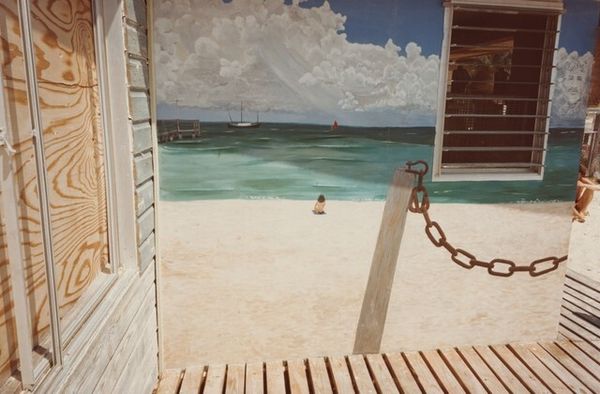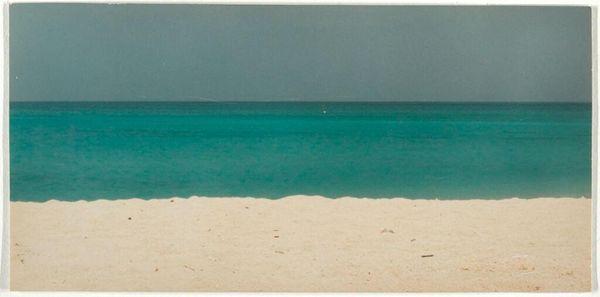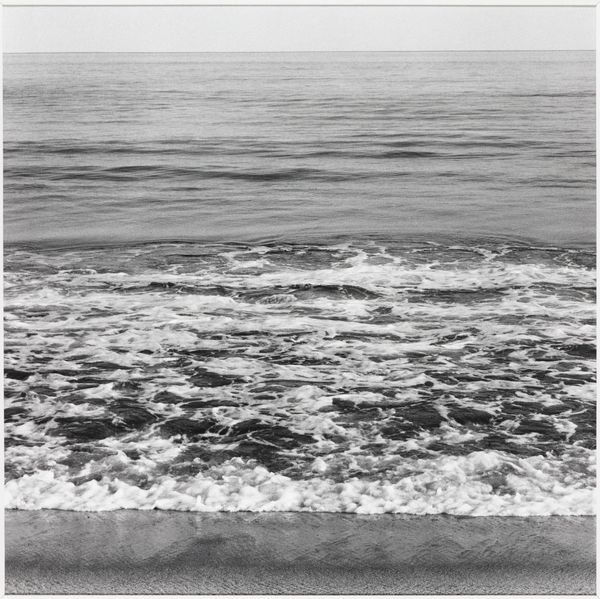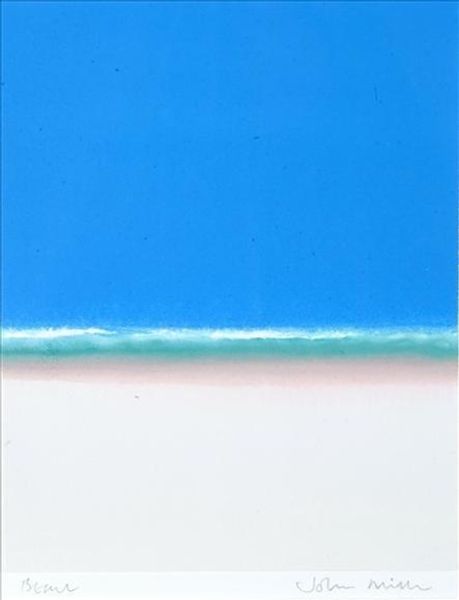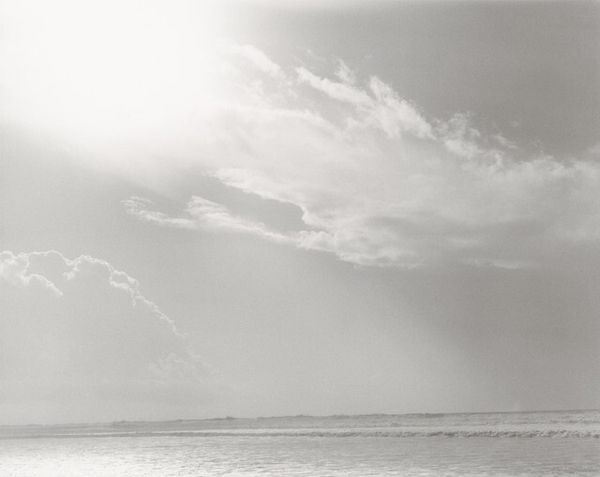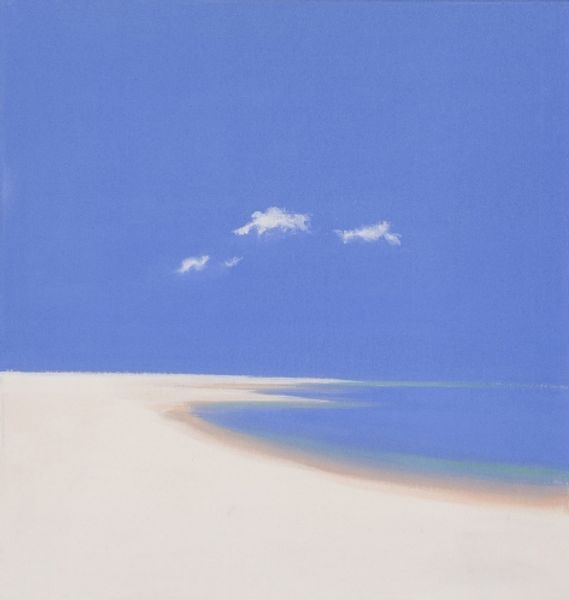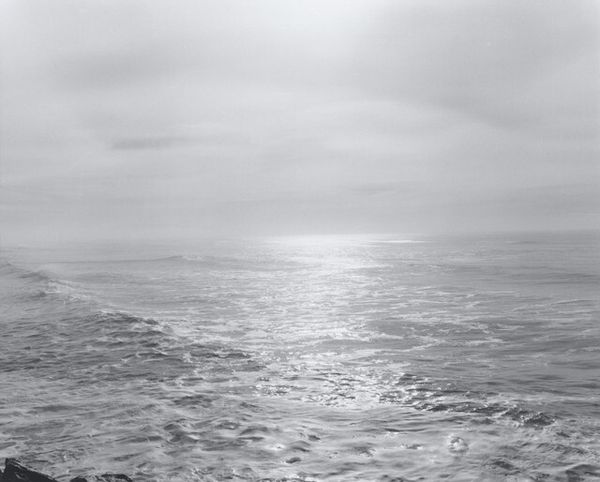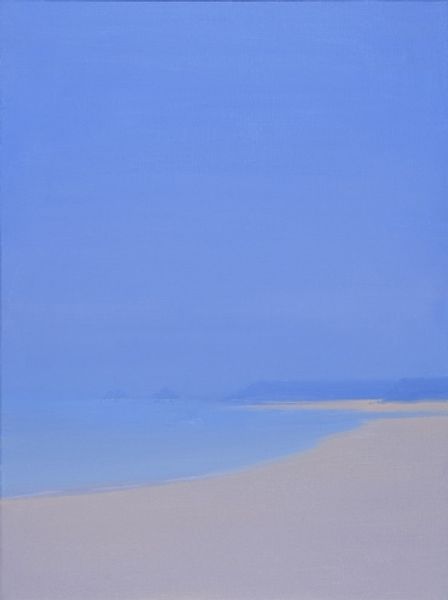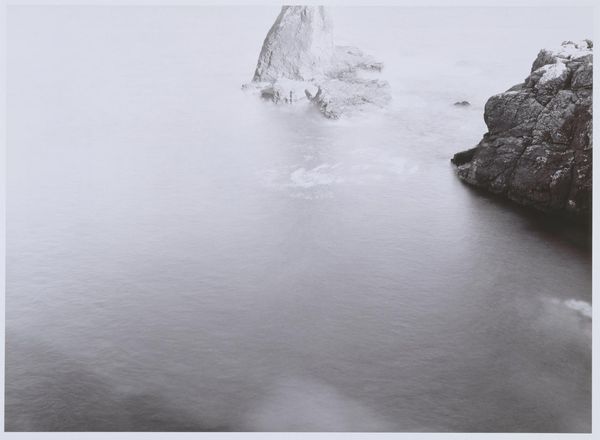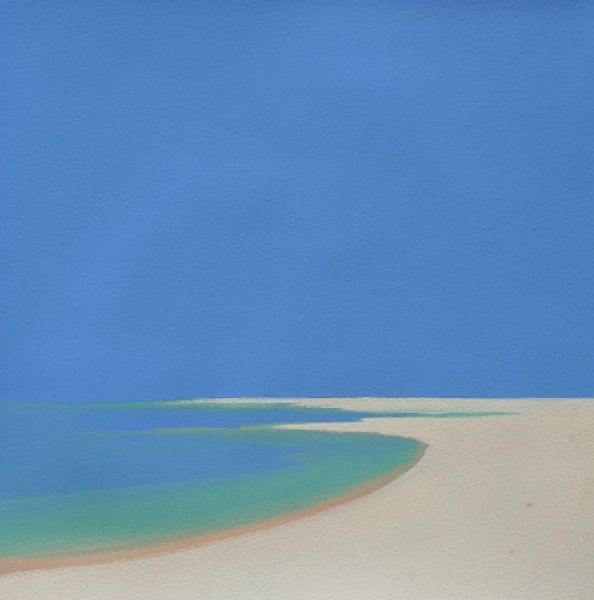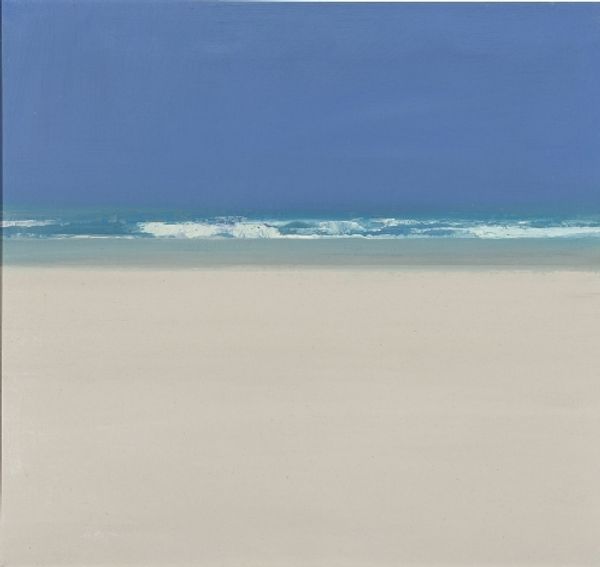
photography
#
conceptual-art
#
landscape
#
photography
#
environmental-art
#
geometric
#
line
Dimensions: image: 18.8 x 25 cm (7 3/8 x 9 13/16 in.)
Copyright: National Gallery of Art: CC0 1.0
Editor: Here we have John Pfahl's "Altered Landscape: Triangle, Bermuda," taken in 1975. It's a photograph of a pristine beach scene, but then there's this imposed geometric form—a triangle made of what looks like twine anchored into the sand. It disrupts the natural scene, and I'm left wondering, what exactly is the artist trying to say? What do you see in this piece? Curator: I see an intervention, a disruption of the natural landscape using basic materials to question our relationship with it. The twine, the simple geometric shape, and the photographic process itself all speak to the means of production. Consider the labor involved: the act of physically creating this triangle in the sand, the artist's decisions regarding material choices, and how that labor contrasts with the vastness and seeming 'untouched' quality of the natural environment. It seems almost futile. Editor: So, you’re saying the materials are crucial here, right? It's not just about the visual, but the act of *doing* and its commentary on environmental intervention? Curator: Precisely! It's about foregrounding that relationship. It is environmental art in a time of emerging ecological awareness. Are we mastering or disrupting nature? The contrast between the ephemeral nature of the tide and the imposed line asks how we impose our constructed geometries on the world. Think, too, about the commodity status of ‘pristine’ landscapes in photography. The photograph as a saleable art object versus a place experienced viscerally. Editor: I never considered it that way, but it is fascinating to think about that contrast between human effort and the natural world represented in a tangible photograph. Curator: It questions value systems: natural beauty, artistic intervention, the photograph as object. Editor: Definitely gives me a different perspective on how to approach environmental art. Thanks for that. Curator: My pleasure. Thinking about material conditions often reveals hidden aspects of artwork!
Comments
No comments
Be the first to comment and join the conversation on the ultimate creative platform.


